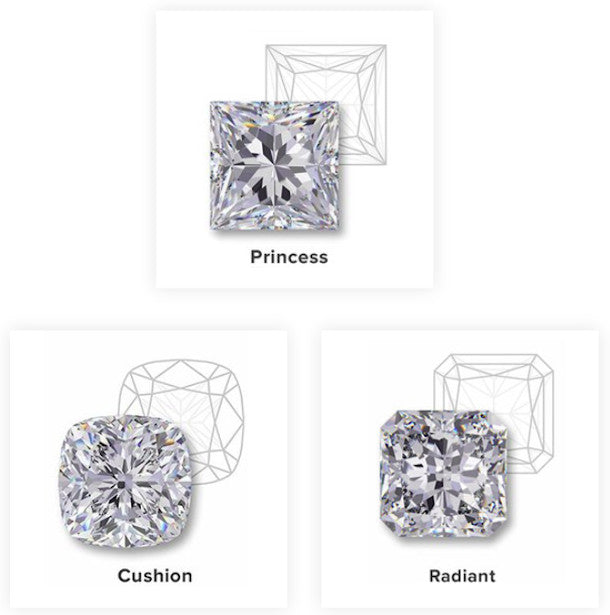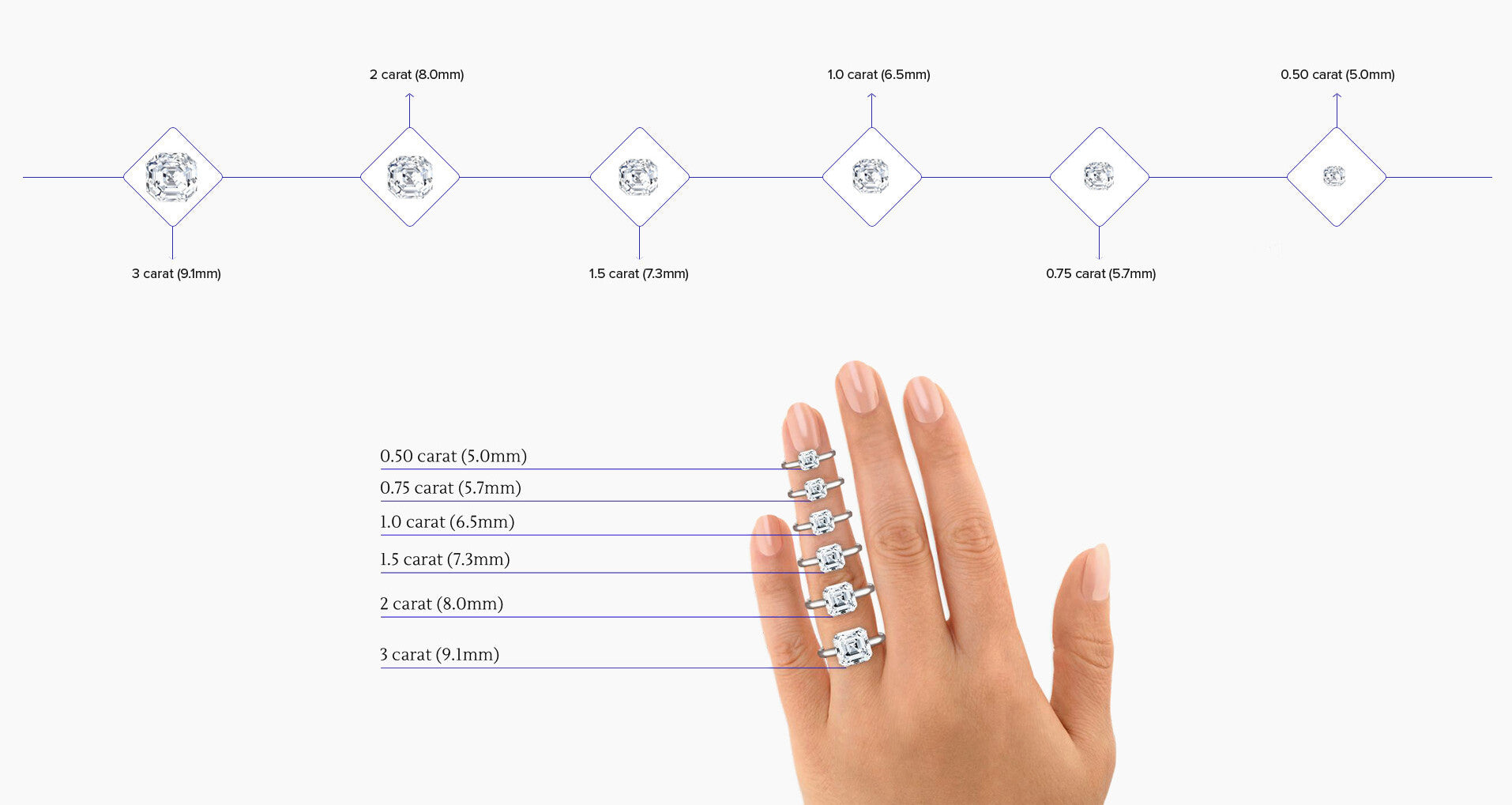
Modern and geometric, the princess cut diamond makes a bold statement. The choice of confident and creative women who aren’t afraid to square the circle, the princess cut is a popular choice for engagement rings. Rows of smaller princess cut diamonds fit edge to edge giving diamond bands, wedding bands, and tennis bracelets sleek seamless brilliance. Princess cuts are also a popular alternative to round brilliant diamonds in studs.
The princess cut is the most modern of the popular diamond shapes. Based on the square French cut, which has an X facet pattern but many fewer facets, the princess cut diamond has its beginning in the 1960s. A diamond cutter in London named Arpad Nagy launched a new square diamond cut that he officially named the Profile Cut but also sometimes referred to as the princess cut. At around the same time in South Africa, Basil Watermeyer began working on an 81-facet rectangular cut called the Barion Cut, which combined the brilliance of a round with the rectangular outline of an emerald cut. Both cuts were patented in 1971 so the patents have now expired.


Here’s what you need to know about shopping for princess cut diamonds. The basics of the 4Cs of diamond quality are the same as for round brilliant diamonds but the GIA grading reports for princess diamonds don’t include a cut grade. (AGS does offer princess cut grades.)
When you are shopping for princess cut diamonds, you need to check the length to width ratio: a comparison of how square the shape is. A ratio of 1 would be a perfect square and a ratio of 1.2 would be more of a rectangle.

Make sure you buy your loose princess cut diamond from a company that demonstrates a commitment to responsible sourcing. Supporting the Kimberley Process is a great start but the best suppliers go beyond that, sourcing diamonds directly from sightholders and mines.
There’s one final step to making sure that you’ve found the right princess cut diamond. Compare your diamond by entering the GIA report number into ROSI. In a few seconds, you’ll see if artificial intelligence can find you a better diamond value.


The two other options that are most similar to a princess cut diamond are a radiant cut diamond and a cushion cut diamond.
Radiant cut diamonds are very similar to the princess cut with straight sides but they have beveled corners like an emerald cut diamond, making them an octagon instead of a square or rectangle. The radiant has many facets with a “crushed ice” appearance with slivers of brilliance. Although the cut corners make it less likely to chip, the radiant cut can concentrate color. It may appear a little less colorless than a princess cut of the same color grade.
A cushion cut diamond is another option for those who love the princess cut because it is more square than a round brilliant. Instead of the princess cut’s straight sides and ninety-degree corners, a cushion has rounded sides and corners. Cushion cut diamonds can be very brilliant. The best cushion cuts will display the hearts and arrows pattern in a light-performance viewer. A hearts-and-arrows cushion like RockHer’s Cushion Brilliant designed by master cutter Brian Gavin, is a great way to get the precision cutting and high light performance of a hearts and arrows round brilliant for less per carat.
There’s something so crisp and modern about the straight edges of a princess cut. It has excellent fire and brilliance and the facet pattern is forms beautiful lines that emphasize the square shape.
When you place two princess cuts table-to-table you’ll notice that the princess cut fits very closely into the outline of an octahedron diamond crystal. Princess cut diamonds waste a lot less diamond rough than other diamond cuts.

Our customers’ favorite setting for princess diamonds is a simple princess diamond band engagement ring. Halo engagement rings are also popular because they make your princess cut diamond look larger thanks to the frame of diamonds around it. The geometric style of a princess cut goes well with a solitaire engagement rings. In a princess three stone engagement ring, our customers generally prefer three princess cuts or tapered baguettes on the side. We also love to see princess cut diamonds custom set with the corners at the points of the compass: it makes this sharp-edged cut look even more unique.

Buying princess cut diamond online is more challenging than shopping for a round brilliant because there are more princess cuts that aren’t well-cut.
ROSI generally recommends a color of H and clarity of VS2 for princess diamonds. This will give you a diamond that looks colorless with no inclusions visible to the naked eye. The money you save can be invested in a larger size diamond and a better cut. ROSI recommends excellent cut, symmetry and polish for a diamond that sparkles beautifully.

That’s why princess cut diamonds are much more affordable than round brilliants, selling for 20-40% less. However the princess cut is relatively deep so it looks a bit smaller than a round brilliant of the same carat weight.
There is one drawback to choosing a princess cut diamond. The sharp edges and points are more prone to chipping than more rounded shapes. If you work with your hands or have an active lifestyle you might want to consider a ring setting like a halo or bezel that protects the corners.
In recent years some cutters have started beveling the corners of princess cuts slightly to make them less susceptible to chipping.
